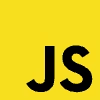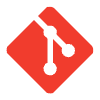Web Developers for Hire: Keywords That Make Your Job Post Stand Out

Web Developers for Hire: Keywords That Make Your Job Post Stand Out
What Is the Power of Targeted Keywords?
5 Keywords That Attract Skilled Candidates
1. Frameworks Like React or Node
2. Cloud Services Such as AWS or Azure
3. Responsive or Mobile-First Design
4. API Integration or RESTful Services
5. Version Control With Git
How ATS Scans Keywords
Soft Skill Terms That Elevate Your Listing
Evolving Keywords for Emerging Tech
FAQs About Hiring Web Developers
What if my project needs an ultra-specialized tech stack?
Do I need to list every framework or library?
Should I rewrite my job post for each hiring platform?
Final Thoughts on Effective Hiring
Web Developers for Hire: Keywords That Make Your Job Post Stand Out
What Is the Power of Targeted Keywords?
5 Keywords That Attract Skilled Candidates
1. Frameworks Like React or Node
“React is JavaScript, but not all JavaScript is React. Kind of like how all squares are rectangles, but not all rectangles... well, you get it.”
2. Cloud Services Such as AWS or Azure
3. Responsive or Mobile-First Design
4. API Integration or RESTful Services
“API integration” is the grown-up way of saying “I’ve made two things talk to each other without breaking everything else.”
5. Version Control With Git
How ATS Scans Keywords
“Think of ATS like CTRL+F for hiring—if your word isn’t there, it won’t be found.”
“Listing ‘React’ five times doesn’t make you five times more visible. It just makes the post harder to read.”
Soft Skill Terms That Elevate Your Listing
Evolving Keywords for Emerging Tech
“Mentioning ‘AI integration’ instead of just ‘data processing’ is like ordering espresso when you actually want cold brew.”
“Blockchain” in job posts often signals smart contract development, tokenized systems, or work with Ethereum-based tools like Solidity or Hardhat. Candidates searching for these roles use terms like “on-chain logic,” “dApp development,” or “crypto wallet integrations.”
“If your job post still says jQuery in 2025, you might be attracting the wrong crowd.”
“Web3 is still here. The metaverse? Somewhere in the trunk with Google Glass.”
FAQs About Hiring Web Developers
What if my project needs an ultra-specialized tech stack?
Do I need to list every framework or library?
Should I rewrite my job post for each hiring platform?
Final Thoughts on Effective Hiring
“A job post written once is a post that stops working.”
Posted Apr 14, 2025
Web developers for hire need job posts with the right keywords. Learn which terms attract top talent and improve visibility in search and ATS filters.







